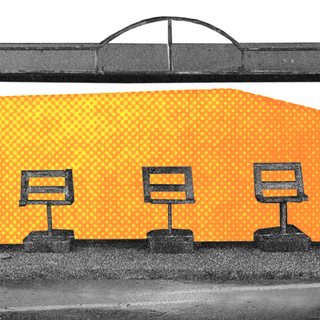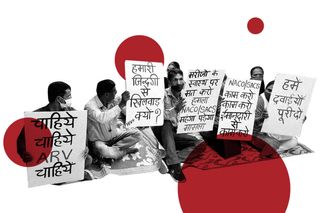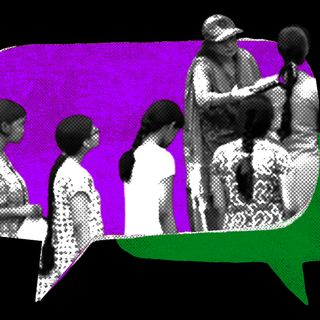
HIV Patients Are Protesting a Nationwide Shortage of Life‑Saving Medicines
“It is criminal to not give someone a drug that can save lives,” says an activist.

“It is criminal to not give someone a drug that can save lives.” This is Harishankar, whose voice is sturdy with resilience but carries notes of fatigue. He references the government’s delay in procuring medicinal drugs critical for people living with the human immunodeficiency virus (HIV).
Harishankar was first diagnosed with HIV in 2002, and has since been advocating for equality in healthcare treatment and welfare opportunities for people living with HIV. Since Thursday, Harishankar, along with a group of HIV patients and activists, have been staging an indefinite protest in New Delhi against the shortage of antiretroviral (ARV) drugs that are critical for life and living for thousands of HIV patients in India. The site of protest is the office of the National Aids Control Organization (NACO), India’s regulatory body charged with providing medicines, diagnostic kits, and training to treat patients infected with HIV,as well as instituting preventive measures among vulnerable groups.
ARV drugs are available at the antiretroviral centers (ATR), which provide free medicines under the government’s National AIDS Control Programme. According to a 2014 estimate, almost 7,50,000 people depend on the free distribution of drugs through these government-run centers. Studies suggest a person living with HIV may expect a life expectancy that is comparable to an HIV-negative person — provided they have access to medicines and treatment. If left untreated, HIV can progress intoacquired immune deficiency syndrome (AIDS), a disease that damages the immune system.A growing body of research has progressively shown how with proper medical care — that is taking the ARV medicines on time and regularly — HIV can be controlled. It is one of the few ways to stay healthy and for the virus to remain suppressed.
Antiretroviral drugs are thus critical to patient care; they can indeed be life-saving, or at least life-preserving, for people living with HIV, making access to drugs a fundamental right. The current shortage is then a crisis that has severely impacted people’s daily work, livelihood, and basic health.
“There have been shortages of drugs before, but this is the first time we’re seeing a shortage and stock-out of this scale and severity,” Harishankar tells The Swaddle. The shortage of these antiretroviral drugs has been persistent and pan-Indian. Delhi ART centers have been turning away patients for almost five months now; even other states, from Rajasthan to Manipur, have run out of stock for different drugs. In Delhi, for instance, Harishankar notes patients in Delhi have been unable to access ARVs like Dolutegravir (DTG), pediatric medicine, lopinavir and ritonavir, which are used for first and second-line treatment of HIV for the last two-three weeks at least. In 2018, the World Health Organization recommended Dolutegravir as the first and second line of treatment; studies had sufficiently shown that the drug is more effective than others, reduces viral load in patients, and has comparatively fewer side effects. India integrated the drug into its HIV-control protocol in 2020.
Related on The Swaddle:
The Indian Govt Conflates Sex Workers With AIDS Control, Further Marginalizing Them
The shortage and stockout are the results of multiple logistical mishaps; the current hiccup is a series of tender process, manufacture bidding, paperwork, and administrative tapes going wrong. In December last year, NACO stopped the supply of certain antiretrovirals due to a delay in the procurement process, according to a Scroll.in report. They have asked states to individually procure certain drugs while they once again invite companies to submit their bids. A tentative timeline is it may take another few months before a supply of drugs could kickstart again.
Moreover, “the drug is manufactured by only a few companies. The authorities [like NACO] buy it at a much lower price, which can also hinder the supply of the drug,” said Dr. Ishwara Gilada, a consultant in HIV, STDs, and Infectious Diseases at Mumbai-based Unison Medicare & Research Centre. So for individual states the quantities would be much smaller, who would then have to purchase the drugs from pharma companies for a higher price, further increasing the cost of the drug.
But the delay buffeted by logistical winds matters little. “I understand there are logistical troubles and issues, and people may be helpless too. But the virus doesn’t respond to helplessness, it just responds to antiretroviral medicine,” says Harishankar.
The implications of the current shortage are several. In most cases, antiretroviral centers note the government stocks are running dry; in others, recent reports suggest that many are asking patients to switch to another drug regimen due to the acute shortage. For instance, a local ART center in Imphal is asking a 67-year-old who requires a combination of abacavir, lamivudine, ritonavir, and lopinavir to shift to another combination: tenofovir, lamivudine, and dolutegravir. “They are asking me to take another medicine without assessing whether it will work on me. How can I take it?” he told Scroll.
Related on The Swaddle:
An Existing Cancer Drug Could Help Cure HIV One Day, Find Scientists
In centers where the drugs are available, patients are given only three-four doses at once, and are asked to visit the ART center once every week. This pattern presents tangible accessibility and affordability challenges. “It leads to an increase in travel expenses and is also time-consuming as most of them are daily wage workers,” the protesters noted in a letter. Moreover, activists also note in that many cases, people who work in offices have to lie to go and procure these medicines due to the stigma around HIV. A lot of times, this means people may prefer to opt out of the treatment due to the added cost of travel and logistical hindrances.
“If you ask someone to come four times in a month, either they will have access to medication or they will leave their job. And if they leave their job, what will they eat?” Harishankar says. People can either choose their livelihood or their health.
In some cases, the drugs are available in big pharmaceutical stores. But this is true only for certain parts and for certain people, people who can afford these drugs priced exorbitantly. The impact of the shortage is also more acutely felt in the context of the Covid19 pandemic, which had further restricted patients’ mobility and access to ART centers. Loss of employment and adequate opportunities also meant people are left with depleting purchasing power to buy these drugs on their own. Transport and money are pertinent crises now, just as they were during the lockdowns.
“Firstly, they aren’t available. Where they are available, they aren’t affordable or accessible. For people who don’t have money to eat or travel, from where will they get money to buy these medications? The aam aadmi who doesn’t have the resources to travel or to eat can’t afford to opt for these medicines from big pharma,” Harishankar says. The result? “They have stopped taking them altogether.”
Patients are urging the government to at least provide a month’s stock of ARV medicines in advance so as to eliminate the need to revisit ART centers for refills.
People in need of care and treatment are fighting to procure drugs that are critical to their lives. The helplessness, anxiety, and angst play out persistently across protests or within households against a system that has succumbed to mismanagement. The shortage reflects a systemic apathy to a condition that afflicts some of the most marginalized — such as female sex workers, men who have sex with men, trans persons, and injecting drug users.
“To stage a protest was our last option,” Harishankar says. Time, resources, and health are all scarce tokens available to those present. “But this was a necessity.”
Saumya Kalia is an Associate Editor at The Swaddle. Her journalism and writing explore issues of social justice, digital sub-cultures, media ecosystem, literature, and memory as they cut across socio-cultural periods. You can reach her at @Saumya_Kalia.
Related


Can’t Deny Abortion to Unmarried Women, Rules Supreme Court
